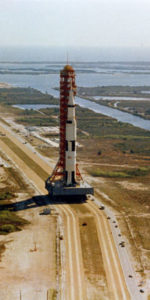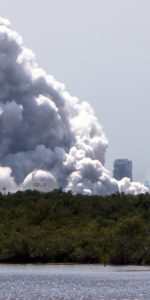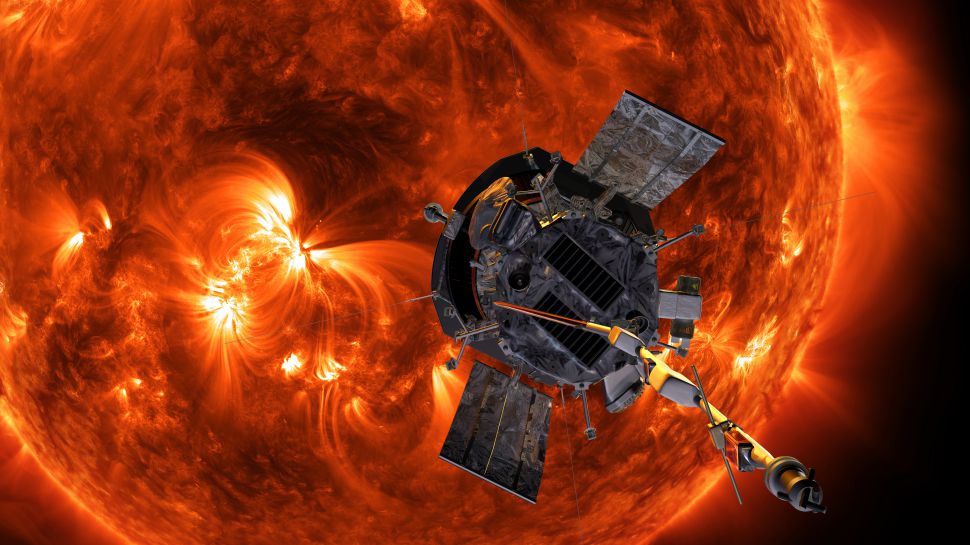
NASA’s Parker Solar Probe (PSP) made its second close approach of the Sun yesterday – the closest that any spacecraft has ever flown past any star.
PSP passed through the outermost layers of the Sun’s atmosphere, the corona, at 213,000 mph, coming within 15 million miles of the Sun itself. Closest approach, called perihelion, occurred at 6:40 p.m. EDT. PSP began this phase of the mission back on March 30, 2019, and it will last until April 10.
All four suites of scientific instruments are currently operational and will collect science data from within the Sun’s corona as the probe passes through.
Due to its close proximity however, PSP has been out of radio contact with Earth since March 30, since it must keep its heat shield oriented toward the Sun during the encounter. After this mission phase is completed, it will resume contact and send the data back to Earth over several weeks, as it did during the first close approach. PSP has been designed specifically to withstand the searing temperatures and powerful gravity it experiences from being so close to the Sun.
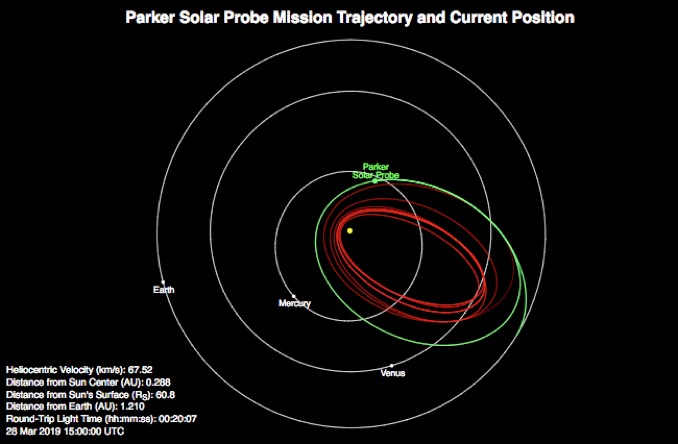
This second close approach will pass the Sun at about the same distance as its first approach; the previous distance record was held by the Helios 2 probe, at about 27 million miles from the Sun, in 1976. On Dec. 26, 2019, PSP will use a Venus gravity assist – the second of seven – to put it on a trajectory for even closer passes of the Sun. PSP will perform 24 close passes of the Sun in total, each one closer than the one before. The first Venus gravity assist was on Oct. 3, 2018.
The third close flyby is scheduled for Sept. 1, 2019.
In 2025, at the end of the mission, PSP will pass through the Sun’s corona, only 3.83 million miles from the surface of the Sun, enduring temperatures nearing 2,500 F.
PSP’s mission is basically to find out how the Sun works and find answers to some long-standing questions, such as how the solar wind accelerates particles, and why the Sun’s corona is so much hotter than its surface even though it is much further away.
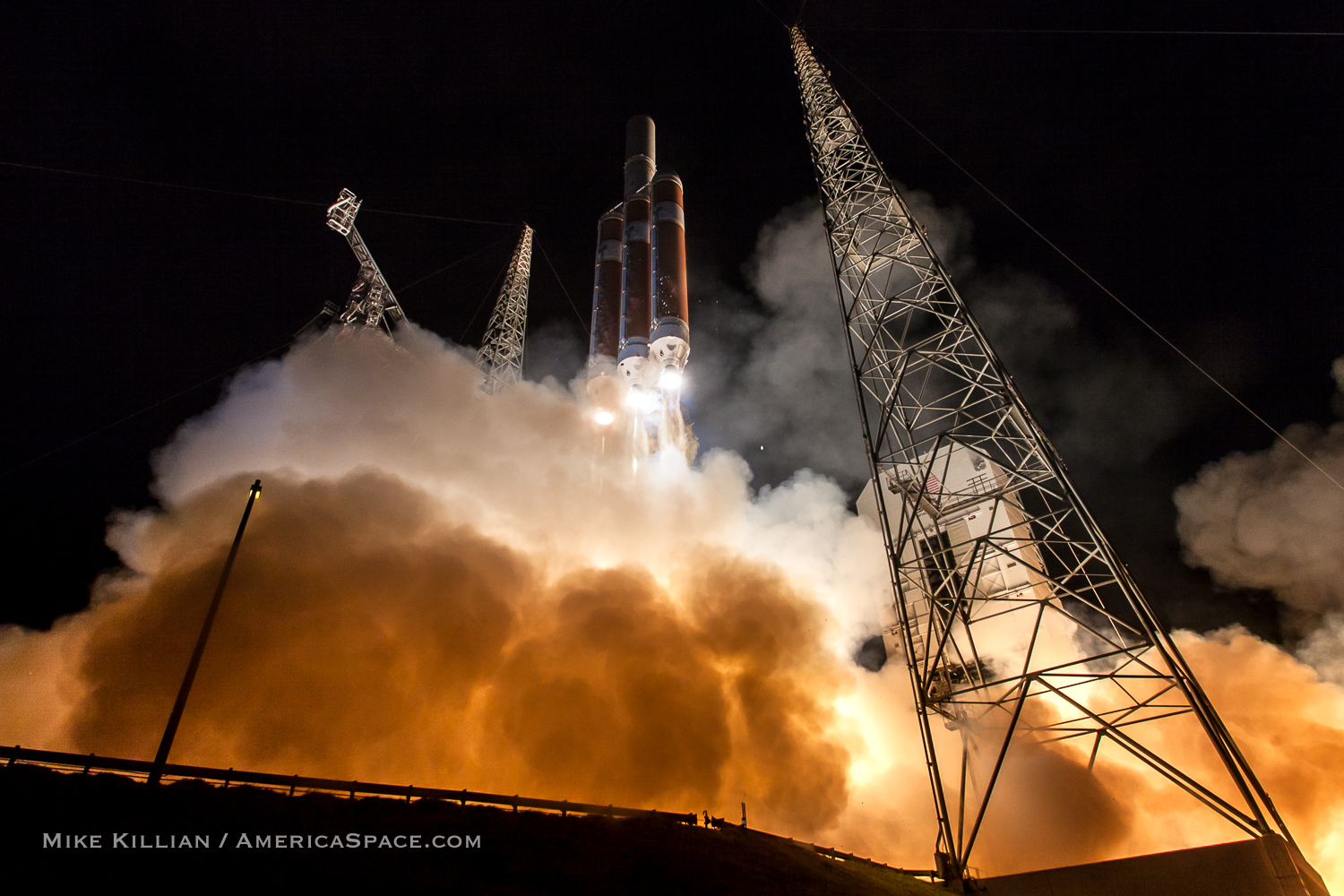
“It’s going to help us be able to predict solar flares,” NASA administrator Jim Bridenstine said last week at a congressional subcommittee in Washington, D.C. “It’s going to help us predict coronal mass ejections potentially that could be very damaging to astronauts in deep space as we return to the moon and eventually go on to Mars. So we need to be able to predict those to protect human life into the future.”
“Parker Solar Probe is going to revolutionize our understanding of the Sun, the only star we can study up close,“ said Nicola Fox, project scientist for Parker Solar Probe at the Johns Hopkins Applied Physics Lab in Laurel, Maryland. “The mission undertakes one of the most extreme journeys of exploration ever tackled by a human-made object.“
PSP is named after the American solar astrophysicist Eugene Parker, who developed the theory of solar wind
More information about Parker Solar Probe is available on the mission website.
.
.
FOLLOW AmericaSpace on Facebook and Twitter!
.
.
Missions » Parker Solar Probe »



